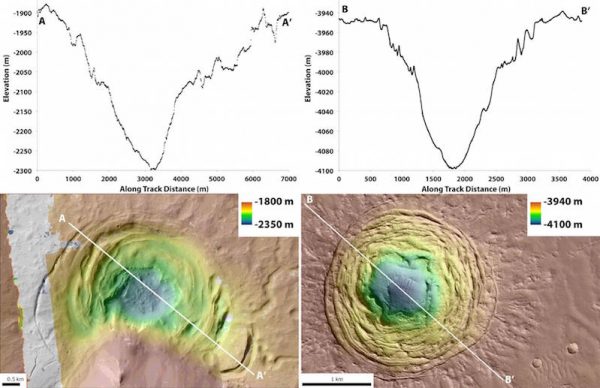Researchers at UT Austin have analyzed a deep depression on Mars that differs from a typical crater. The Hellas depression may in fact be an ancient ice cauldron, where a glacier forms over an active volcano, creating a chemical-rich environment that could support life forms.

A second formation in Galaxias Fossae has similar depth and is also worth a closer look, according to researchers:
While the Galaxias Fossae landform morphology is consistent with an impact origin, the large volume of removed material in North Hellas is less consistent with an impact origin and is interpreted to have resulted from volcanic melting of ice. The possibility of liquid water formation during or subsequent to volcanism or an impact could generate locally-enhanced habitable conditions, making these features tantalizing geological and astrobiological exploration targets.
Ice cauldrons occur on earth, and they oven have unique local ecologies, like this one called Katla in Iceland:
The full paper is available here.
• A Funnel on Mars Could Be a Place to Look for Life (via R&D)







